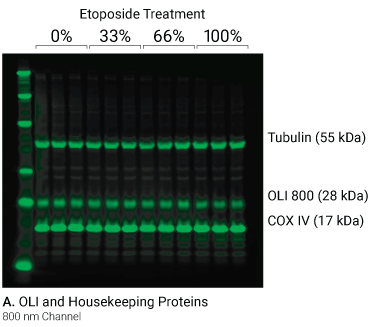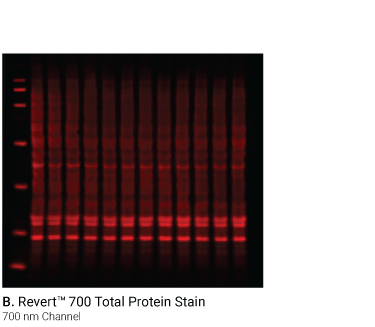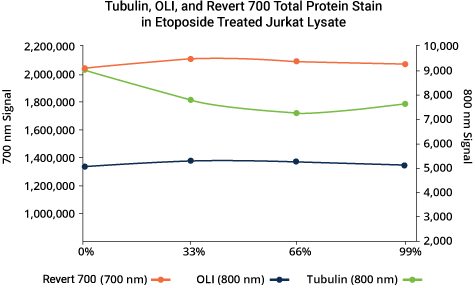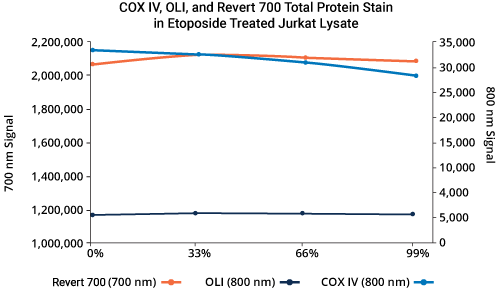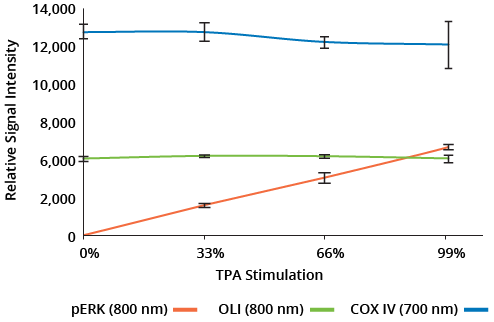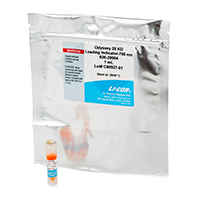Odyssey® Loading Indicators
Products
Evaluate Sample Loading Consistency and Uniformity with Odyssey Loading Indicators
Odyssey Loading Indicators (OLI) provide a simple, convenient method to evaluate the consistency of sample loading volume across gel lanes, as well as the uniformity of Western blot transfer.
It is essential to have consistent sample loading between gel lanes for comparative and quantitative Western blot analysis. By adding equal amounts of an Odyssey Loading Indicator, you can determine if loading was consistent or if a pipetting error occurred.
- Evaluate Consistency. Ensure samples were equally loaded in each lane.
- Check Uniform Transfer. Confirm that transfer from gel to membrane was uniform.
- Assess Stable Expression. Help determine if a housekeeping protein is stably expressed and can be used for Western blot normalization.
Note: Accurate normalization relies on an internal loading control, an endogenous protein used as an indicator of sample concentration. Since the OLI is an exogenous protein, it functions as an external loading control, and cannot be used for normalization. However, you can use OLI to help check if your internal loading control is stably expressed.
Visit our Western blot Normalization page for more information on Western blot normalization strategies.
Assess Stable Expression of Housekeeping Proteins for Normalization
If you’re using a housekeeping protein to normalize Western blot data, you must validate that its expression is constant across all samples and is unaffected by experimental conditions. As an exogenous protein, the Odyssey Loading Indicator is not subject to up- or down-regulation as a function of experimental sample treatment. A stable signal for an OLI across several lanes indicates that any signal variation for the housekeeping protein was not caused by inconsistent sample loading.
"'House-keeping' proteins should not be used for normalization without evidence that experimental manipulations do not affect their expression."
